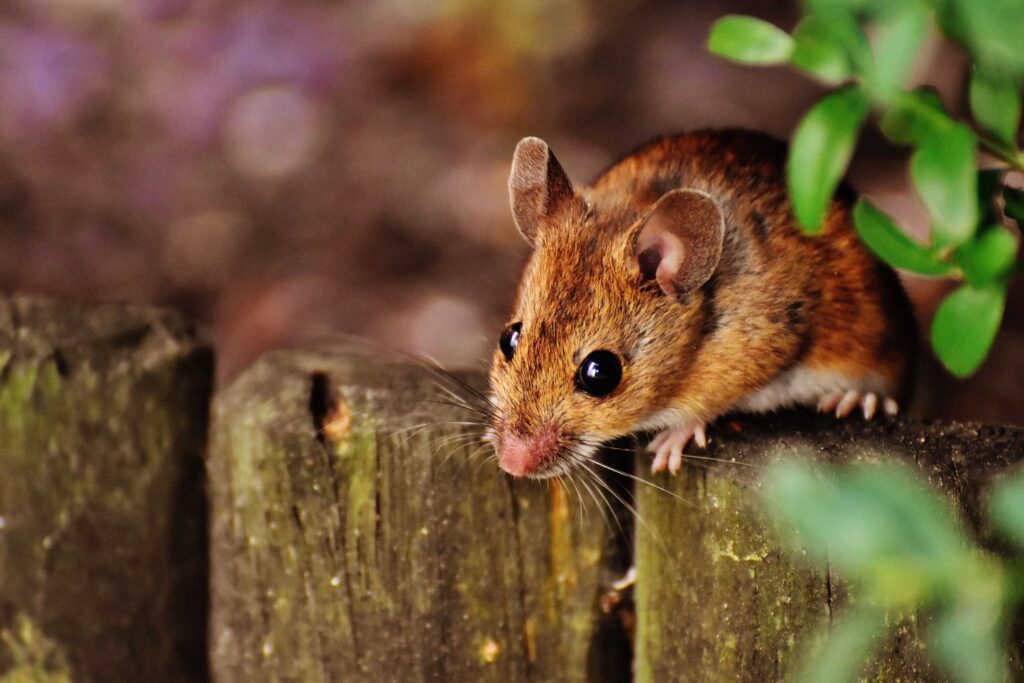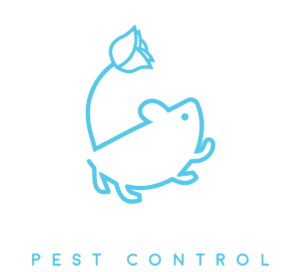Mice Control

Mice: Small Critter, Big Headache
Mice may look harmless, but they’re far from innocent. These tiny, sneaky squatters can turn your home into their personal playground, destroying food, gnawing on wires, and spreading diseases without you even knowing it. Don’t be fooled by their size—when mice move in, they bring chaos with them. They’re fast and they multiply like crazy. If you’ve spotted a mouse—or even just a trace of one—there could be whole hidden infestation waiting to be uncovered. The good news? You can stop them before they take over.
Signs Mice Have Moved In
Mice are masters of stealth, but they leave behind a trail of clues. Here’s how to tell if you’ve got these uninvited guests lurking in your walls:
- Tiny Droppings: Mouse droppings, resembling small black pellets roughly the size of a grain of rice, are a clear sign of infestation. You’ll often find them near food sources, in cabinets, or along baseboards. One mouse drops 50-60 droppings per day.
- Chewed Packaging: If you notice nibbled boxes or bags in your pantry, it’s a sign that mice have found their way into your food storage.
- Nocturnal Noises: Mice are most active at night, so if you hear scratching or scampering in the walls, attic, or under the floor, they’re likely making themselves at home.
- Mystery Bites: Rodents often bring fleas, mites and ticks with them. If they’ve been nesting within your home somewhere, be it the attic or subarea, those biting pests migrate toward the closest blood meal, you and your family.
- Nest Materials: Mice build nests out of shredded paper, fabric, and insulation. If you find small piles of this material in dark, hidden spaces, mice are likely nesting nearby.
- Tiny Footprints and Trails: In dusty areas like basements or storage rooms, you might spot mouse footprints or tail marks as they travel the same routes over and over.
- Rub Marks: Rub marks look like dark stains and are caused from repeated rubbing of dirty fur, indicating repeated entry/exit at a given area
- Food stash: You may find collections of nut shells, pet food and other food debris under appliances such as the dishwasher, stove and fridge, and even under furniture


The Hidden Dangers Mice Bring to Your Home
Mice may be small, but the damage they cause is enormous. Here’s why you should take a mouse infestation seriously:
- Disease Spreaders: Mice are carriers of dangerous diseases, including hantavirus, salmonella, and leptospirosis. These can be transmitted through their urine, droppings, and fur, contaminating your living space.
- Fire Hazards: Mice love to gnaw on electrical wires, which can lead to sparks and fires. Many home electrical fires are traced back to damage caused by rodents.
- Food Contamination: Mice will chew through your pantry, contaminating food with their droppings, urine, and saliva, making your kitchen a health hazard.
- Rapid Reproduction: Mice breed incredibly fast. A single pair of mice can produce dozens of offspring in just a few months, turning a small problem into a major infestation before you know it.
How Mice Sneak into Your Home
Mice are resourceful little invaders, and they don’t need much to slip inside. Here’s how they find their way in:
- Tiny Cracks and Holes: Mice can squeeze through gaps as small as a dime. Cracks around windows, doors, and foundations are perfect entry points.
- Open Doors and Windows: Mice will easily crawl through doors or windows left ajar, especially as the weather cools and they seek warmth.
- Utility Lines and Pipes: Mice are great climbers and can travel along utility lines, pipes, and even climb walls to access attics, crawl spaces, or roofs.
- Roofline Gaps: Damaged roofing or gaps in soffits and vents make for easy mouse highways into your attic and walls.
- Plumbing: Mice can enter from the sewer through the main drain line to an opening in the pipes caused by pipe degradation, chewing, or plumbers leaving an old open pipe still connected to the sewer system. All are common in the San Gabriel Valley.
Why Your Home Is the Perfect Mouse Hideout
Mice don’t pick homes at random—they’re drawn to specific conditions that make your home an ideal hideaway:
- Food Sources: Crumbs, spilled food, and unsecured garbage are a buffet for mice. They’ll eat almost anything and will happily raid your pantry and pet food storage.
- Warmth and Shelter: As temperatures drop, mice look for warm, cozy places to nest. Your home, with its insulation and hidden corners, is the perfect spot.
- Cluttered Storage Areas: Mice love cluttered spaces like attics and basements. Boxes, old clothes, and unused furniture provide perfect nesting material and hiding spots.
- Water Sources: Leaky pipes, condensation, or even pet water bowls can provide mice with the hydration they need to survive indoors.
10 Jaw-Dropping Facts About Mice
- They Squeeze Through Tiny Openings: Mice can fit through gaps as small as a dime, thanks to their collapsible skeletons.
- Can Go Without Water—They can go without direct water for 2+ weeks. They make good use of the moisture from their food.
- Fast Breeders: A single female mouse can give birth to 12 babies every three weeks, leading to an infestation in no time.
- They Can Jump: Mice can jump up to 12 inches high, which helps them access food or hide in high places.
- Keen Smell: Mice have an extraordinary sense of smell, which helps them locate food and detect danger, making them hard to trap.
- Persistent Travelers: Once a mouse knows a route to food, it will remember and use it repeatedly, making it difficult to disrupt their patterns.
- Mice Communicate Ultrasonically: Mice use high-frequency sounds—too high for humans to hear—to communicate with each other.
- They Can Swim: Mice are capable swimmers and can tread water for hours if needed.
- Disease Carriers: Mice can transmit over 30 diseases, including serious ones like hantavirus and salmonella.
How to Keep Mice Out of Your Home
Preventing a mouse infestation takes a combination of diligence, expert knowledge, often painstaking work, and preparation. Here’s how to keep these pests out:
- Seal Entry Points: Have your home professionally inspected and sealed by rodent experts. We don’t recommend attempting this yourself if you want lasting protection. Traps should be placed (and checked) whenever exclusion is performed.
- Proper Food Storage: Store food in airtight containers, and clean up crumbs and spills immediately. Don’t leave pet food out overnight. Don’t feed wildlife. Don’t leave fruit from trees on the ground.
- Declutter: Mice thrive in clutter. Clear out basements, attics, and storage rooms, and avoid piling up boxes and bags that provide hiding spots.
- Eliminate Water Sources: Fix any leaks or condensation issues, and keep areas like kitchens and bathrooms dry.
- Use Traps: Mice are much easier to trap than rats. Set traps inside in areas where you’ve noticed mouse activity, especially along walls and in hidden corners. Careful not to over-bait your traps.
- Bait Stations: Bait stations should be reserved for professional use but are the most effective option for exterior population suppression.
- Trim Vegetation Off Home to mitigate climbing to roof
- Minimize Conducive Conditions: Firewood on the ground, fruit trees, other foods, ivy, Bougainvillea, other ground cover, clutter, shelter, etc.

How to Keep Mice out of Your Drains (and thereby Your Home)
Mice have a very keen sense of smell. From the main sewer, they can detect food in your drains and garbage disposal and will follow their noses until they’ve reached the prize. Rats have a great memory (think rat in a maze) and won’t soon forget the food and shelter your plumbing clean-outs and home provide. They will also be drawn to American or Turkestan Roaches (they eat them) who themselves are drawn to the food in your garbage disposal and home. Don’t set yourself up for years of hardship. Follow these tips to keep rats out of your drains:
-
- Regularly clean your sink and keep it clear of dirty dishes
- Avoid pouring grease or oils down the drain
- Avoid putting food in the garbage disposal / sink drain
- Use garbage disposal minimally
- Do a light wash of dishes before placing them in the dishwasher
- Clean your sink drain / garbage disposal monthly Level 1 Cleaning
- 1 cup baking soda
- 1 cup distilled white vinegar
- Rinse with boiling water
- Boiling water
- Enzyme Application
- Foaming Sanitizer (to get all the nooks of the garbage disposal)
- Clean your kitchen and keep it clean
- Keep your toilet seat covers down
- Stress to your plumber performing any work that they are not to leave ANY open pipe. Any cancelled pipe left connected is to be cemented shut with no gaps allowing air to pass through.
Why Mice Are Best Left to the Rodent Exclusion Experts
Mice may seem small, but they’re incredibly resourceful and can outsmart many DIY methods. Store-bought traps and bait might catch a few, but they won’t solve the problem long-term. Mice breed quickly and can hide in areas you may not think to look. In an industry largely lacking competence in rodent control, we at Pasadena Pest Control specialize and take great pride in our rodent work. We take a comprehensive and in-depth approach to mouse and rat control, targeting the infestation at its source and sealing entry points to prevent future invasions. Our team of experts uses eco-conscious, effective methods that are designed to get rid of mice fast and for good.
Ready to Send Mice Packing? Call Pasadena Pest Control Today!
Don’t let mice take over your home! Call Pasadena Pest Control today, and we’ll help you eliminate these destructive squatters once and for all. Our expert team will track down every last mouse, seal up entry points, and make sure they never come back. Your home should be yours—not a mouse hotel. Get in touch with us today, and let’s evict those rodents before they cause more damage!
Questions Others are asking
We ❤️ love helping new customers! Don’t see your question answered below? Call us and we’ll
be happy to provide more information.
be happy to provide more information.
Mice can squeeze through very small openings, often entering through cracks, holes, and gaps around doors or windows.
Mice can damage structures by gnawing on wood, wires, and insulation. They also contaminate food and surfaces with droppings.
Seal entry points, maintain cleanliness, and store food in sealed containers. Traps and professional pest control can also be effective.
